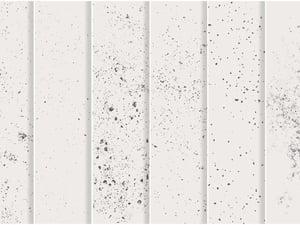
How to Make a Grainy Gradient in Illustrator
Illustrator Tips & Tricks
When you twant to make a grainy effect on your designs, you might instantly head to Photoshop to do the job. But if you are working with vector shapes that have a gradient fill applied and you want to add some grain to your design, there is also a way to make a grainy effect in Illustrator. This method will let you keep your shape and gradient fully editable! Today, I will show you a very simple (yet effective) method to add some grain to your designs. In this case, there is a shape with a gradient applied so you can better see the effect. Please note: You can use any shape or gradient that you like, but to keep the tutorial easy to follow, I will make use of a circle filled with a simple gradient.
Step 1
Open Illustrator and make a new file at any size you want. In this case I will make mine at 900 x 900 px.

Step 2
Select the Ellipse Tool (L) and make a circle at any size you want. In this case, I will make mine at 700 x 700 px.

Step 3
Go to Window > Gradient to open the Gradient Panel.

Step 4
Select any type of gradient that you like to use. In this case, I will use the Radial Gradient.

Step 5
Double click on the white color control point and set any color you like. Here I will be using #c832a0.

Step 6
Next, double click on the black color control point and set any color you like. I will be using #321e8c.

Step 7
Click right below the gradient slider to add a new control point at 50%.

Step 8
Double click on the recently added control point and set any color you like. I will be using #ff7d70.

Step 9
With the circle selected go to Effect > Blur > Gaussian Blur. Set the Radius to about 40 pixels and click OK.

Step 10
Again, go to Effect > Blur > Gaussian Blur. Set the Radius to about 60 pixels and click OK.

Step 11
Go to Effect > Texture > Grain.

Step 12
Lastly, in the Grain Window, set any Intensity and Contrast you like. Be sure to select the the "Regular" or "Soft" Grain Type from the dropdown menu (to make a better effect) and click OK. For this example, I will setup the Intensity to 30, the Contrast to 50, and use the "Soft" Grain Type.

A Final Note:
If you later want to change the colors, simply open the Gradient window, make any color modifications you like (change colors, add new ones or change the position), and the effect will remain intact.










Comments